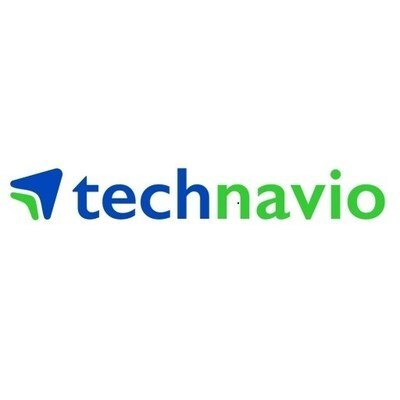NEW YORK, May 19, 2024 /PRNewswire/ — The global gaming simulators market size is estimated to grow by USD 12940.2 million from 2024-2028, according to Technavio. The market is estimated to grow at a CAGR of 15.98% during the forecast period.
For more insights on the forecast market size and historic data (2018 – 2022) – Download Free sample report in a minutes
|
Forecast period |
2024-2028 |
|
Base Year |
2023 |
|
Historic Data |
2018 – 2022 |
|
Segment Covered |
Component (Hardware and Software), End-user |
|
Region Covered |
North America, Europe, APAC, South America, and |
|
Key companies profiled |
3D perception AS, Adacel Technologies Ltd., Aero |
Segment Overview
This gaming simulators market report extensively covers market segmentation by
- Component
- 1.1 Hardware
- 1.2 Software
- End-user
- 2.1 Commercial
- 2.2 Residential
- Type
- 3.1 Racing
- 3.2 Shooting
- 3.3 Flight
- Geography
- 4.1 North America
- 4.2 Europe
- 4.3 APAC
- 4.4 South America
- 4.5 Middle East and Africa
1.1 Hardware- The gaming simulators market continues to evolve, with distributors, suppliers, and retailers playing a pivotal role in bringing advanced technologies to end-users. Augmented reality (AR) and virtual reality (VR) are revolutionizing skill enhancement in various industries, including aerospace, automotive, and maritime safety. Simulation-based training offers operational efficiency, adhering to regulatory requirements, and providing next-level, time-efficient training methods. Cutting-edge technologies, such as high-fidelity graphics rendering, immersive virtual environments, interoperability, and networked training scenarios, are transforming defense, healthcare, and transportation sectors. VR headsets, cloud computing, AI, and high-speed internet networks are essential components of these advanced training solutions. Game type insights cater to diverse interests, with Velocità Racing Simulator, Gesture-based gaming, and F-GT Lite leading the way. In the entertainment industry, VR, VR headsets, and game hubs are increasingly popular in amusement parks and theme parks. Stress busters and Next Level Racing provide immersive experiences for individual users. Regulatory requirements and interoperability are crucial considerations for the gaming simulators market. As the market transitions to more advanced technologies, the need for advanced training solutions and interoperability between different systems becomes increasingly important. The future of gaming simulators lies in the integration of AR, VR, cloud computing, AI, and high-speed internet networks to create a more engaging, interactive, and effective training experience.
3.1 North America– The gaming simulators market in North America continues to thrive, with Full Swing Golf leading the way in the sports sim subgenre. Game genres, such as simulation games, have gained significant traction, with touch devices and tap-and-swipe mechanics making these experiences more accessible. Popular games like Asphalt 9: Legends and Microsoft Flight Simulator offer immersive training experiences for professional race pilots and aviation enthusiasts, respectively. Technological advancements, including augmented reality (AR) and virtual reality (VR), have revolutionized the digital gaming business, providing high-fidelity simulations and live gaming experiences. Simulator Industry leaders, such as Nodwin Gaming and their esports project, have capitalized on the popularity of motorsports and e-sports, offering online gaming operations and stringent safety regulations for immersive training experiences.
For more information on market segmentation with geographical analysis including forecast (2024-2028) and historic data (2018 – 2022) – Download a Sample Report
Key Market Trends Fueling Growth
The gaming simulators market is experiencing significant growth due to technological advances in VR technology, particularly the integration of 360-degree videos. VR headsets, such as Oculus Rift, Morpheus, and Vive, offer immersive experiences with a 360-degree field of vision, enhancing the quality of experience for gamers. This technology is increasingly being adopted in various sectors, including military training, aviation, and education, for affordable, controlled, and risk-free training in complex scenarios. Simulator developers are focusing on customer-centric products, improved graphics, and haptic feedback systems to provide geotypical 3D representation and immersive experiences. However, stringent regulatory approvals remain a challenge in the aviation sector. The market ecosystem includes equipment-use training, computer-based battlefield scenarios, pilot training, and gaming systems, among others.
Market Challenges
The gaming simulators market faces a significant challenge: high prices excluding the majority of the population, particularly in Asia where demand is high but disposable income is low. Simulation games, such as those in the flight or racing genres, often utilize advanced technology like touch devices, tap-and-swipe mechanics, and virtual or augmented reality. These innovations increase costs, making simulators financially unattainable for most consumers. Commercial use offers limited time for enjoyment, while professional race pilots and aviation training require high-fidelity simulations with stringent safety regulations. Nodwin Gaming’s esports projects and motorsports events showcase the potential of online gaming operations, but the high cost of simulators remains a barrier to entry.
Research report provides comprehensive data on impact of trend, driver and challenges – Buy Report
Research Analysis
The Gaming Simulators Market is experiencing significant growth, driven by advancements in Virtual Reality (VR) technology and the rising popularity of stress-busting simulation games. Next-level racing experiences, such as those offered by F-GT Lite, are becoming increasingly immersive with the use of Roto VR Chairs and high-speed internet networks. Amusement and theme parks are integrating simulation games into their offerings, expanding their reach and attracting a wider audience. Game genres, including simulation games, are benefiting from touch devices and tap-and-swipe mechanics, making them more accessible and engaging. Understanding simulation games requires a deep dive into actions and game progression, which is where high-fidelity simulations come in. Stringent safety regulations ensure that the Simulator Industry, including aviation, provides immersive training experiences that are both safe and effective. Augmented reality is also playing a role in enhancing the overall gaming experience, adding an extra layer of realism to simulations.
Market Research Overview
The Gaming Simulators Market represents a significant and growing industry segment. These advanced systems enable users to experience realistic and immersive gaming environments. Virtual Reality (VR), Augmented Reality (AR), and Mixed Reality (MR) technologies are key components of gaming simulators, providing users with a heightened sense of presence and interaction. The market caters to various sectors, including education, healthcare, military training, and entertainment. Gaming simulators offer benefits such as improved learning outcomes, enhanced training experiences, and increased engagement. Companies are continually innovating to deliver more sophisticated and interactive simulators, incorporating features like haptic feedback, motion tracking, and advanced graphics. The market is expected to grow substantially due to the increasing demand for immersive gaming experiences and the ongoing advancements in technology.
Table of Contents:
1 Executive Summary
2 Market Landscape
3 Market Sizing
4 Historic Market Size
5 Five Forces Analysis
6 Market Segmentation
- Component
- Hardware
- Software
- End-user
- Commercial
- Residential
- Type
- Racing
- Shooting
- Flight
- Geography
- North America
- Europe
- APAC
- South America
- Middle East And Africa
7 Customer Landscape
8 Geographic Landscape
9 Drivers, Challenges, and Trends
10 Company Landscape
11 Company Analysis
12 Appendix
About Technavio
Technavio is a leading global technology research and advisory company. Their research and analysis focuses on emerging market trends and provides actionable insights to help businesses identify market opportunities and develop effective strategies to optimize their market positions.
With over 500 specialized analysts, Technavio’s report library consists of more than 17,000 reports and counting, covering 800 technologies, spanning across 50 countries. Their client base consists of enterprises of all sizes, including more than 100 Fortune 500 companies. This growing client base relies on Technavio’s comprehensive coverage, extensive research, and actionable market insights to identify opportunities in existing and potential markets and assess their competitive positions within changing market scenarios.
Contacts
Technavio Research
Jesse Maida
Media & Marketing Executive
US: +1 844 364 1100
UK: +44 203 893 3200
Email: [email protected]
Website: www.technavio.com/
![]() View original content to download multimedia:https://www.prnewswire.com/news-releases/gaming-simulators-market-size-is-set-to-grow-by-usd-12-94-billion-from-2024-2028–gaming-simulators-integrated-with-vr-headsets-to-boost-the-market-growth-technavio-302149533.html
View original content to download multimedia:https://www.prnewswire.com/news-releases/gaming-simulators-market-size-is-set-to-grow-by-usd-12-94-billion-from-2024-2028–gaming-simulators-integrated-with-vr-headsets-to-boost-the-market-growth-technavio-302149533.html
SOURCE Technavio

Featured image: deposit photo © belchonock





